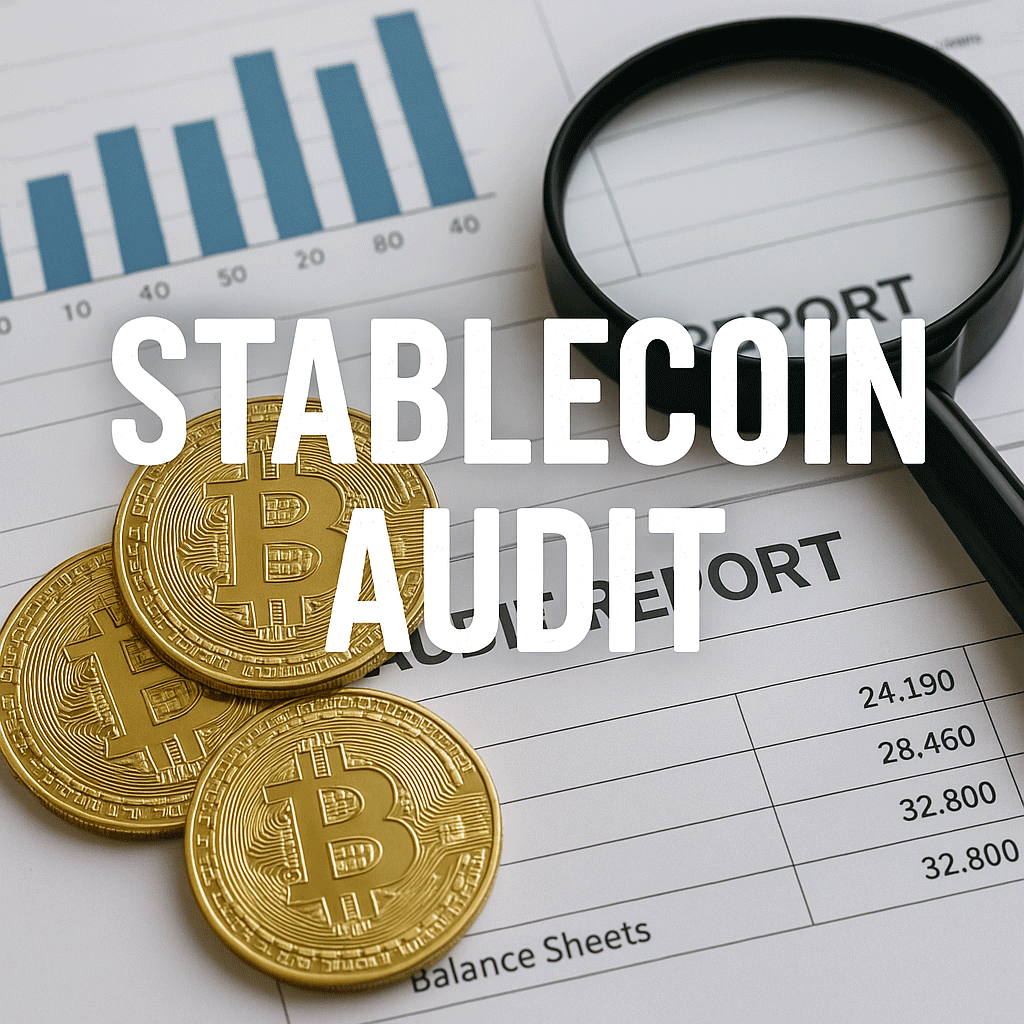Stablecoins have emerged as a cornerstone of the cryptocurrency ecosystem, offering price stability and acting as a bridge between the digital asset world and traditional finance. However, recent controversies and collapses have emphasized the need for stablecoin audit practices to ensure Transparency and user trust.
What is a Stablecoin Audit?
A stablecoin audit is an independent review of a stablecoin issuer’s financial and technical records. The audit verifies that the claimed reserves fully back the stablecoin, whether it is fiat currency, short-term government securities, or other assets. It also evaluates the mechanisms used to maintain the peg to a specific value, usually the US dollar.
Key Objectives of a Stablecoin Audit
- Reserve Verification: Confirm that the reserves exist and are equivalent to the circulating supply of the stablecoin.
- Transparency: Providing detailed insights into the types of assets held in reserve.
- Regulatory Compliance: Ensuring the issuer complies with jurisdictional laws and financial regulations.
- Risk Assessment: Identifying potential vulnerabilities, such as centralization risks or opaque reserve management.
Why Stablecoin Audits Matter
The need for robust audit procedures became evident following the collapse of algorithmic stablecoins like TerraUSD (UST), which lacked verifiable reserves. This event shook investor confidence and prompted regulatory scrutiny.
Case Study: Tether (USDT) vs. USD Coin (USDC)
Tether, the most widely used stablecoin, has faced criticism for its lack of transparent audits and opaque reserve structure. In contrast, USDC, issued by Circle, undergoes monthly attestations by third-party firms and publishes detailed reports, boosting its reputation for Transparency.
Regulatory Push for Auditing
Governments and regulatory bodies are increasingly emphasizing stablecoin audits:
- The US Treasury recommends that stablecoin issuers be subject to federal oversight and undergo routine audits.
- The European Union’s MiCA regulation includes requirements for reserve transparency and auditing.
These developments reflect a growing consensus that stablecoin audit practices are crucial for maintaining financial stability and protecting consumers.
Implementing Effective Audit Protocols
Stablecoin issuers aiming for legitimacy and longevity must adopt rigorous audit standards:
- Engage reputable accounting firms for third-party audits.
- Provide real-time or frequent attestations to reassure users.
- Disclose reserve compositions to allow public scrutiny.
- Integrate blockchain-based audit trails for immutable record-keeping.
Benefits of Transparent Auditing
- User Confidence: Transparent audits increase user trust and adoption.
- Market Stability: Properly audited stablecoins reduce systemic risk in DeFi platforms.
- Institutional Participation: Financial institutions prefer compliant, audited, and stable cryptocurrencies for integration.
Internal and External Resources
For further reading, consider:
You can also explore our internal guide, ‘How Blockchain Ensures Audit Integrity.’
FAQ
What is the difference between an audit and an attestation?
An audit is a comprehensive, often annual review conducted by strict accounting standards. An attestation is a more frequent, limited assurance report based on specific data points.
Who performs stablecoin audits?
Reputable accounting firms, such as Grant Thornton or BDO, are commonly engaged to perform these audits.
Are all stablecoins audited?
No. While leading stablecoins like USDC are regularly audited, others, such as Tether, have been slower to adopt full audit practices.
